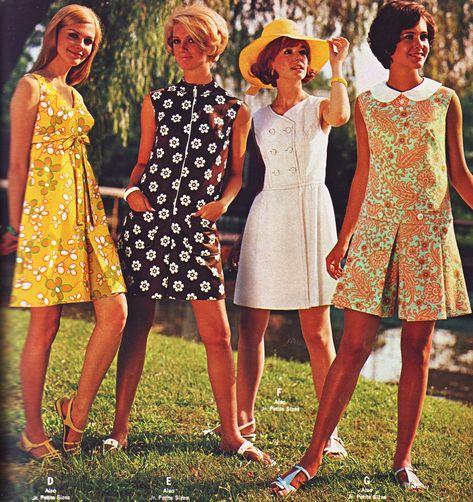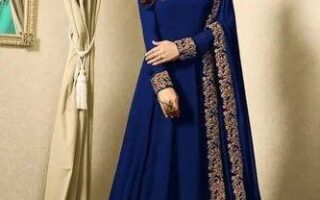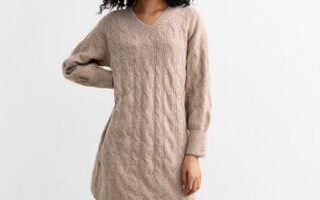The 1960s heralded a revolution, not just in music and politics, but also in fashion—especially for women. This era, rich with cultural shifts and social upheaval, birthed a vibrant tapestry of styles that mirrored the aspirations and attitudes of a generation seeking to break free from the constraints of the past. From the bold, geometric patterns of Mod fashion to the free-spirited bohemian looks that graced the streets and music festivals, women’s clothing in the 60s became a powerful symbol of liberation and self-expression. In this exploration, we will journey through the iconic silhouettes, innovative textiles, and defining trends that shaped the decade, celebrating how women wielded fashion as a tool of empowerment and individuality amidst a backdrop of change.
Table of Contents
- Exploring the Fashion Revolution of 1960s Womens Wear
- Key Fabrics and Patterns that Defined the Era
- Wardrobe Essentials: Must-Have Pieces from the 1960s
- Accessorizing with Purpose: Completing the 60s Look
- Q&A
- To Wrap It Up
Exploring the Fashion Revolution of 1960s Womens Wear
The 1960s marked a groundbreaking era in women’s fashion, characterized by a dramatic shift towards boldness and individuality. This was a time when traditional styles began to dissolve, giving way to vibrant colors, geometric patterns, and unique cuts. Mini skirts surged in popularity, revolutionizing the way women expressed themselves, while shift dresses offered a chic alternative that promised comfort and style. The sense of freedom reflected in the clothing was emblematic of the broader cultural movements that defined the decade, empowering women to embrace their identity through fashion. Vintage boutiques today often celebrate this dynamic vibe, highlighting pieces that feature:
- Mod styles that embraced playful color palettes
- Bohemian influences with earthy tones and flowing fabrics
- Statement accessories like bold earrings and oversized sunglasses
The era was also notable for the influence of pop culture icons, with figures like Twiggy and Jackie Kennedy shaping trends that would last well beyond the decade. A striking aspect of 1960s women’s wear was the merging of functionality with the avant-garde. Fabrics like polyester and nylon became staples, allowing for innovative designs that were both fashionable and practical. Stylistic choices were often reflective of groundbreaking social changes, leading to a blend of elegance and rebellion. Here’s a quick look at iconic pieces from the period:
| Iconic Piece | Description |
|---|---|
| Mini Skirt | A daring length that showcased legs and encouraged boldness. |
| Shift Dress | Easy to wear, this dress style slouched away from the body, creating a relaxed silhouette. |
| Bell Bottoms | Flared trousers that epitomized the anti-establishment spirit, popular among the youth. |
Key Fabrics and Patterns that Defined the Era
The 1960s were a revolutionary time in fashion, with fabrics and patterns that not only defined the era but also empowered women. The innovative use of prints became quintessential, particularly with bold geometric patterns and psychedelic designs that reflected the vibrant culture of the time. Fabrics like cotton, denim, and knit became popular choices, enabling comfortable yet stylish attire that could be worn by women of all shapes and sizes. The introduction of polyester also transformed the industry, making garments easier to care for while allowing for brighter colors and intricate patterns.
Among the most iconic patterns were mod stripes, polka dots, and floral prints, each adding a distinct personality and flair to attire. The mini skirt, championed by designers like Mary Quant, showcased these lively designs, while materials such as silk and challis enhanced evening looks with their luxurious drape. Here’s a brief overview of some standout fabrics and patterns from this era:
| Fabric | Pattern |
|---|---|
| Polyester | Geometric Prints |
| Denim | Floral Patterns |
| Cotton | Polka Dots |
| Silk | Psychedelic Prints |
| Knit | Mod Stripes |
Wardrobe Essentials: Must-Have Pieces from the 1960s
The 1960s were a pivotal decade in fashion, marked by a revolutionary spirit that influenced women’s attire in countless ways. One of the standout essentials from this era is the shift dress, a loose-fitting style that became a symbol of youth culture and liberation. Typically featuring bold patterns and vibrant colors, these dresses allowed women to embrace their individuality while providing unparalleled comfort. Pairing effortlessly with knee-high boots or chic ballet flats, the shift dress encapsulated the essence of mod fashion while remaining a timeless staple in any wardrobe today.
Another iconic must-have of the ’60s is the tailored blazer. Emphasizing a structured silhouette, blazers were often worn over fitted tops or dresses and marked the intersection of femininity and professionalism. Designed with sharp lines and eye-catching details, they were made to be both functional and stylish. Complete your look with high-waisted trousers or a pencil skirt, both of which were popularized during the decade to highlight a woman’s figure while allowing for ease of movement. These chic combinations continue to be relevant, proving that the elegance and versatility of 1960s fashion can effortlessly transcend time.
Accessorizing with Purpose: Completing the 60s Look
To truly embody the vibrant spirit of the 1960s, elevate your outfit with accessories that reflect the era’s boldness and innovation. Begin with statement jewelry that captures the essence of the time—think oversized hoop earrings, chunky beaded necklaces, and geometric rings. These pieces not only add a pop of color but also serve as conversation starters, showcasing your unique flair. Don’t forget to include headbands and scarves, which can be worn in various styles to enhance your hair and complete your look. A simple scarf can be tied around the neck, while headbands can create that instantly recognizable mod vibe.
For a more functional approach, introduce stylish handbags and footwear that serve as practical extensions of your outfit. Opt for boxy handbags or colorful crossbody bags that exude chic practicality, while still remaining true to the era’s aesthetics. Footwear should not be overlooked; consider knee-high boots or ballet flats adorned with vibrant colors or patterns to add a playful touch. When choosing accessories, aim for a harmonious blend of fun and sophistication, ensuring that each item tells a story of the era’s revolutionary spirit.
| Accessory Type | Key Characteristics |
|---|---|
| Jewelry | Bold, oversized, colorful |
| Handbags | Boxy shapes, bright colors |
| Footwear | Knee-high boots, ballet flats |
| Hair Accessories | Headbands, scarves |
Q&A
Q&A on Women’s 60s Clothing: A Journey Through Style and Substance
Q: What were the defining characteristics of women’s clothing in the 1960s?
A: The 1960s were a dynamic decade in fashion, marked by a blend of elegance and rebellion. Key characteristics included bold prints, vibrant colors, and innovative fabrics. Silhouettes varied from the tailored, feminine lines of the early part of the decade to the more liberated, youth-centric styles of the late 60s, such as mini skirts and bell-bottoms. Designers like Mary Quant brought the mod look into the spotlight, while the Hippie movement introduced bohemian flair with flowing fabrics and ethnic prints.
Q: How did societal changes influence 1960s women’s fashion?
A: The 1960s were a time of significant cultural upheaval. The feminist movement began to gain traction, empowering women to express their individuality through fashion. This led to a departure from the constrictive styles of previous decades. As women sought freedom both socially and sartorially, clothing like the mini skirt became a symbol of liberation. Additionally, the Civil Rights Movement and other sociopolitical changes influenced the adoption of Afro hairstyles and ethnic prints in mainstream fashion.
Q: What were some popular fabrics and patterns during the 60s?
A: The 1960s saw an exciting variety of fabrics, including bold synthetics such as polyester and nylon, which allowed for vibrant colors and patterns. Popular patterns included graphic geometric designs, psychedelic swirls, and floral motifs that encapsulated the revolutionary spirit of the decade. The use of innovative materials also made fashion more approachable, allowing for garments that were both stylish and practical.
Q: Who were some prominent designers of women’s clothing during this era?
A: Several designers left an indelible mark on the 1960s. Mary Quant is often credited with popularizing the miniskirt and was a key figure in the British Mod movement. In the U.S., designers like André Courrèges and Oscar de la Renta brought chic and modern aesthetics to the forefront. Diane von Furstenberg introduced her iconic wrap dress towards the decade’s end, which symbolized both femininity and independence.
Q: How did accessories play a role in completing the 60s look?
A: Accessories were crucial in defining the 1960s aesthetic. Statement pieces such as oversized earrings, headbands, and wide-brimmed hats were popular, often embodying the playful, eclectic spirit of the time. Feminine handbags and knee-high boots, particularly with stiletto heels, further accentuated the era’s fashion statement. Additionally, bold makeup, like heavy eyeliner and bright lipstick, served as a visual complement to the vibrant clothing styles.
Q: Are there any contemporary influences from 1960s women’s fashion?
A: Absolutely! The legacy of 1960s women’s fashion continues to resonate today. Many current designers draw inspiration from the era, reviving trends like the mini skirt, vibrant colors, and bohemian styles. The playful mixing of patterns and bold silhouettes is particularly prevalent in modern collections. Additionally, the spirit of individuality and self-expression that characterized the 60s remains a cornerstone of contemporary fashion.
Q: What are some tips for incorporating 60s style into a modern wardrobe?
A: Incorporating 60s style into your wardrobe can be both fun and straightforward. Start with staple pieces like a tailored shift dress or a statement A-line skirt. Look for vibrant prints or retro patterns that can add a pop of nostalgia. Accessories are key—consider pairing your outfit with large, bold jewelry, a patterned handbag, or knee-high boots. don’t forget about makeup: a flick of eyeliner or a bold lip can instantly transport your look back to this stylish decade.
Q: In retrospect, what makes 1960s women’s fashion so important?
A: The 1960s marked a paradigm shift in the way women viewed clothing—moving from the confines of traditional styles to a celebration of individuality and self-expression. This era laid the groundwork for future generations to explore and redefine fashion beyond mere trends, making it an essential chapter in the history of women’s clothing. The decade was not just about aesthetics; it was a reflection of changing attitudes and values that continue to inspire fashion today.
To Wrap It Up
As we close the chapter on the vibrant world of women’s clothing from the 1960s, it’s clear that this decade was more than just a period of fashion; it was a powerful expression of identity, rebellion, and transformation. From the bold and colorful patterns of the Mod movement to the effortless elegance of bohemian styles, the garments of this era reflected the dynamic social changes that reshaped women’s roles and self-perception. Each piece tells a story of empowerment, creativity, and freedom, serving as a testament to how clothing can encapsulate the spirit of a generation.
As we navigate through contemporary fashion, the echoes of the ’60s continue to resonate, reminding us that style is not just about fabrics and trends, but about the values and ideas we choose to wear. As you journey through your own wardrobe, let the essence of this iconic decade inspire you to embrace your individuality and to see clothing as an art form—a vehicle through which you can express who you are and who you aspire to be. Here’s to the enduring legacy of the 1960s, a stylistic revolution that still influences our choices today.


